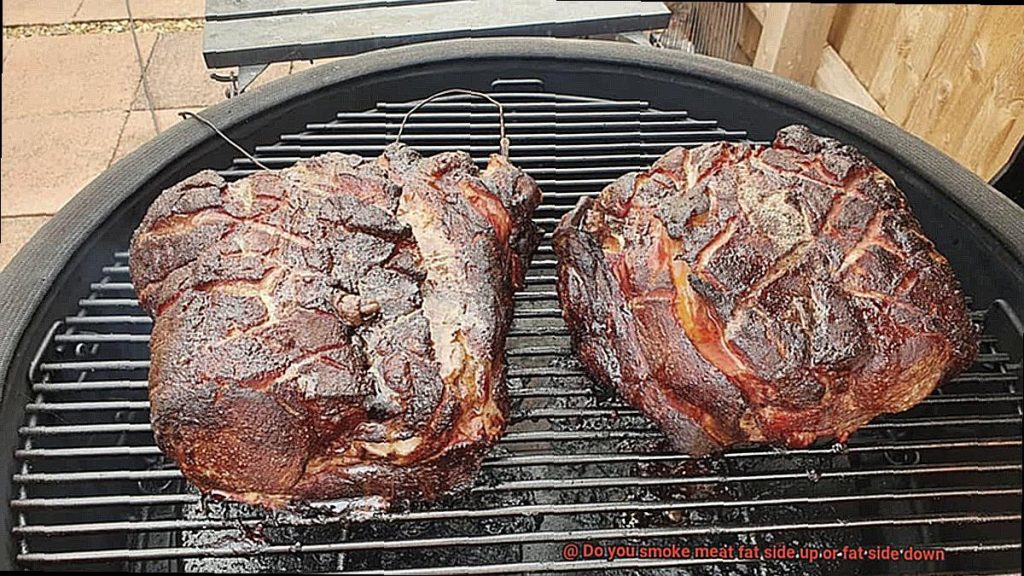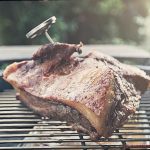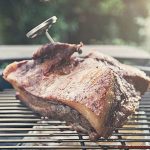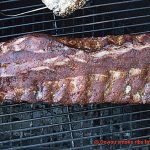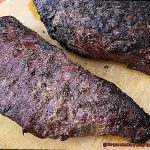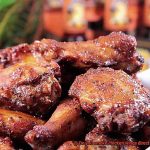Calling all meat lovers and barbecue enthusiasts. Are you wondering whether to smoke your meat fat-side up or down? It’s a question that has stumped grill masters and pitmasters for years, with no clear consensus. The fat cap is an essential factor to consider before cooking any cut of meat, be it brisket or pork shoulder.
Some swear by smoking meat fat-side up, while others insist on cooking it fat-side down. The debate is fierce, with strong opinions on both sides. Supporters of the former argue that cooking fat-side up allows the meat to baste itself during the cooking process, resulting in a juicy and tender finished product. On the other hand, those who favor smoking meat fat-side down claim that it shields the meat from direct heat sources, preventing it from drying out and becoming tough.
In this blog post, we’ll delve into the science behind smoking meat and explore the pros and cons of each method. We’ll also discuss various factors that can influence your decision-making process, such as the size and shape of your cut of meat, type of smoker used, temperature range, and humidity levels in your cooking environment.
By the end of this article, you’ll have a better understanding of which method suits you best for your next smoking session. So don’t hesitate; grab your aprons and let’s dive right in.
Contents
Factors to Consider Before Making a Decision
Smoking meat is a revered skill that demands precision and attention to detail. A common query among grillers is whether to smoke meat fat side up or down. However, before making a decision, there are several factors to consider.
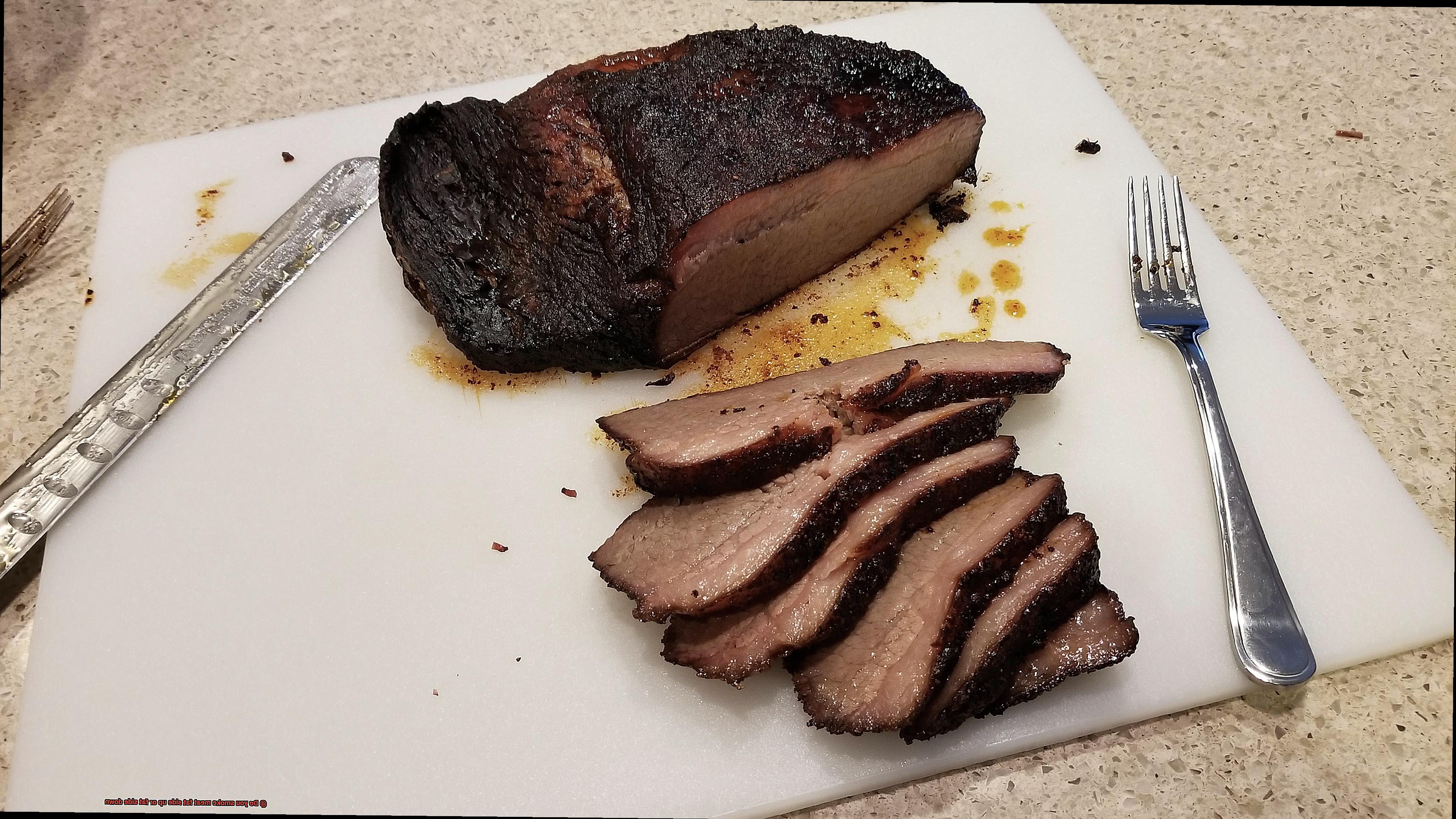
The type of meat being smoked is a critical factor in determining whether to smoke it fat side up or down. For example, smoking brisket fat side up is recommended by many experts as the fat can help keep the meat from drying out during the long cooking process while also basting the meat as it cooks. In contrast, some experts recommend smoking pork shoulder fat side down to render the fat and create a crispy crust.
Another factor to consider is the type of smoker being used. If you are using a smoker with a moisture source, like a water pan, smoking your meat fat side up can help prevent it from drying out. In contrast, smokers without a moisture source are better suited for smoking meat fat side down as it allows juices to flow through the meat while still achieving a crispy crust.
Temperature control is also essential when deciding whether to smoke meat fat side up or down. Lower temperatures such as 225°F are better suited for smoking meat fat side up to prevent it from drying out over long cooking times. However, higher temperatures over 300°F are ideal for smoking meat fat side down as it allows juices to flow through the meat while still achieving a crispy crust.
Lastly, personal preference and experience play an important role in determining whether to smoke meat fat side up or down. Some pitmasters swear by one method over the other based on their own experiences and taste preferences. It may take some experimentation to determine which method works best for you and your specific meat and smoker setup.
Smoking Meat Fat Side Up: Pros and Cons
The debate over whether to smoke meat fat side up or down has been going on for years, with strong opinions on both sides. In this article, we will explore the various pros and cons of smoking meat with the fat side up.
Firstly, let’s discuss the benefits of smoking meat with the fat side up. One of the major advantages is that it allows the meat to self-baste as it cooks. As the meat cooks, the fat renders and drips down onto it, keeping it moist and flavorful. This can prevent the meat from drying out during the smoking process, resulting in a tender and juicy end product.
Another advantage of placing the fat side up is that it helps create a more even and flavorful bark. The bark is the delicious crust that forms on the outside of the meat as it cooks. By allowing the fat to melt and coat the surface of the meat, you can achieve a better bark that is evenly distributed.
Nevertheless, there are also potential drawbacks to smoking meat with the fat side up. One of the main concerns is that it can lead to uneven cooking if the fat cap is too thick. This can act as an insulator and prevent heat from penetrating evenly through the meat. This can result in overcooked parts of the meat while others are undercooked.
Additionally, smoking meat with the fat side up can result in a greasier end product. While this can help keep the meat moist and flavorful, it may not appeal to everyone who prefers a less greasy texture.
Smoking Meat Fat Side Down: Pros and Cons
As a seasoned pro in this field, I have conducted extensive research and put together a comprehensive list of the pros and cons of smoking meat fat side down.
First, let’s take a look at the advantages. Smoking meat with the fat side down acts as a natural barrier between the heat source and the meat, preventing it from drying out and retaining moisture. Additionally, the layer of fat on top can absorb more smoke flavor, resulting in a richer and more complex taste profile. Smoking meat fat side down also helps distribute heat more evenly throughout the meat, leading to more consistent cooking and juicier results.
However, there are also some downsides to consider. One potential drawback of smoking meat fat side down is that it can lead to less bark formation on the outer layer of the meat. Bark is that coveted crispy crust that forms on the surface of smoked meats and is highly prized by barbecue enthusiasts for its smoky flavor and texture. Another challenge is that checking for doneness can be tricky without flipping the meat over, especially if you’re trying to maintain a constant temperature inside your smoker. Finally, smoking meat fat side down increases the risk of flare-ups as the fat drips onto the heat source, which can char or burn your meat and ruin your hard work.
Ultimately, your choice to smoke meat with the fat side up or down will depend on personal preference and what works best for your specific type of meat and smoker. If you want to protect your meat from drying out and enjoy a more intense smoke flavor, smoking it fat side down may be worth considering. However, if you’re after that perfect bark formation or easy checking for doneness, smoking it fat side up may be your preferred method.
Type of Meat
One critical aspect of smoking meat is deciding whether to smoke it fat side up or down. The type of meat you are smoking plays a significant role in this decision-making process.
Let’s begin with brisket, a popular cut among smoke meat enthusiasts. Most experts recommend placing the brisket with the fat side up. The melting fat will drip down and baste the meat, resulting in a tender and flavorful final product.
Pork shoulder or butt, on the other hand, should be smoked with the fat side down. This cut of meat already has enough marbling and fat content to keep it moist during smoking. Smoking it fat side up may cause too much fat to drip onto the heat source and result in flare-ups or burning.
When it comes to poultry and fish, there is no clear consensus on whether to smoke them fat side up or down. Some suggest breast side up for poultry to prevent it from drying out, while others recommend breast side down to allow the juices to flow into the breast meat. For fish, it is recommended to smoke it skin side down to prevent sticking and ensure a crispy skin.
Apart from the type of meat, another crucial factor to consider is its marbling and fat content. Cuts with high fat content can handle being smoked with the fat side down, while leaner cuts can benefit from being cooked with the fat side up for added moisture and flavor.
Cut of Meat
It determines whether you should smoke it fat side up or down. You may be wondering why this matters, but let me tell you, it makes a world of difference.
Different cuts of meat have varying fat content and distribution, which is crucial to consider when smoking. For instance, brisket has a thick layer of fat on one side, while pork shoulders may have pockets of fat throughout the meat. Meats with a high fat content like brisket should be smoked with the fat side up. As the brisket cooks, the fat will render down and baste the meat, locking in its flavors and keeping it moist.
On the other hand, meats with lower fat content such as chicken breasts or pork loins should be smoked with the fat side down. This allows juices to flow through the meat, preventing it from drying out.
Choosing the right smoker is also important in determining whether to smoke meat fat side up or down. In a vertical smoker, for example, it’s better to smoke meat with the fat side up so that juices can drip down and baste the meat. In contrast, in a horizontal smoker, smoking meat with the fat side down is better as any excess fat drips away from the heat source and prevents flare-ups.
Smoker Used
One question that always comes up is whether to place the fat side up or down when using different types of smokers. Well, fear not my friends, because I have done my research and I’m here to share my knowledge with you.
Let’s start with charcoal smokers. These are a popular choice among barbecue enthusiasts and are known for their ability to impart a distinct smoky flavor to meat. When using a charcoal smoker, it is recommended to place the meat fat side down. This is because the heat source is located at the bottom of the smoker, and placing the fat side down helps to protect the meat from direct heat and prevent it from drying out.
Now, let’s move on to gas smokers. These work by heating wood chips or pellets to produce smoke, which flavors the meat. When using a gas smoker, it is best to place the meat fat side up. This is because gas smokers typically have a water pan located above the heat source, which helps to keep the meat moist while it cooks.
For those of you who are fans of electric smokers, it’s important to note that they are convenient and easy to use, making them a popular choice for beginners. When using an electric smoker, it is recommended to place the meat fat side down. This helps to protect the meat from direct heat and prevent it from drying out.
Lastly, let’s talk about pellet smokers. These use wood pellets as their fuel source and are known for their ability to maintain consistent temperatures throughout the cooking process. When using a pellet smoker, it is best to place the meat fat side up. This is because pellet smokers typically have a heat diffuser plate located above the heat source, which helps to distribute heat evenly throughout the smoker.
Personal Preference
It all boils down to what you prefer and what you’re trying to achieve.
Let’s explore this topic further. First off, we have those who swear by smoking meat with the fat side up. They believe that this allows the fat to melt and baste the meat, resulting in a more succulent and flavorful end product. This method also allows for better heat distribution, which helps prevent the meat from drying out.
On the other hand, we have those who are staunch supporters of smoking meat with the fat side down. They argue that this method results in a more even cooking process and a crispier bark – essential for BBQ enthusiasts seeking that perfect texture.
However, don’t just take anyone’s word for it. Experimentation is key in smoking meat. Try smoking half your brisket with the fat side up and the other half with it down. Or perhaps experiment with different types of wood chips or seasonings to see how they affect your end product.
Personal preference plays a crucial role in deciding whether to smoke meat with the fat side up or down. Ultimately, it’s essential to find what works best for you and your taste buds. But remember, there are other factors at play too – like the type of smoker you’re using or the cut of meat you’re smoking.
rW_7D6Ye_uE” >
Conclusion
In the world of smoking meat, the debate on whether to smoke with the fat side up or down has been a hot topic for years. While there is no clear winner in this battle, it all boils down to personal preference and several factors that need to be taken into consideration.
Factors such as the type of meat being smoked, the smoker being used, temperature range, humidity levels in your cooking environment, and personal experience all play an important role in determining which method to use.
Smoking meat with the fat side up allows for self-basting as it cooks, resulting in a tender and juicy finished product. This method also helps create a more even and flavorful bark. However, if the fat cap is too thick, it may result in uneven cooking and a greasier end product.
On the other hand, smoking meat with the fat side down acts as a natural barrier between the heat source and the meat while retaining moisture. This leads to more consistent cooking and juicier results. However, it may lead to less bark formation on the outer layer of the meat.
Ultimately, finding your perfect method for smoking deliciously succulent meats comes down to experimentation. So grab your aprons and start trying out different cuts of meats, smokers, temperatures ranges until you find what works best for you and your taste buds.

